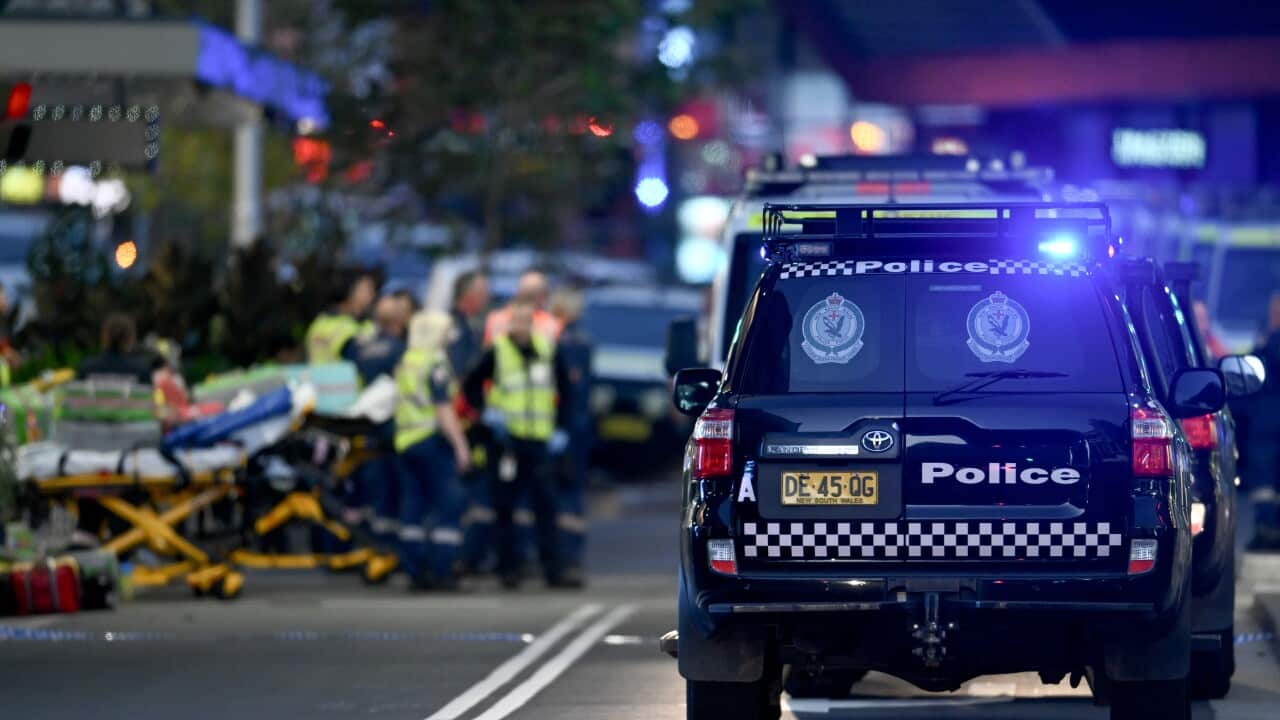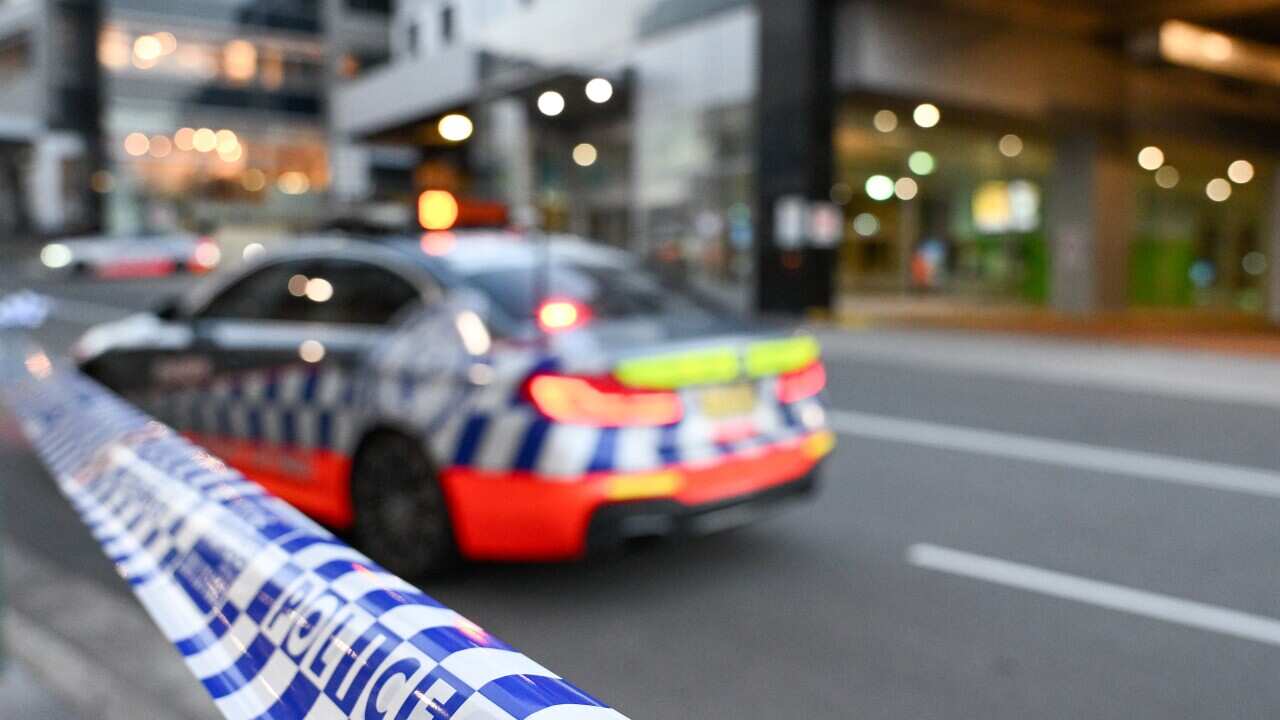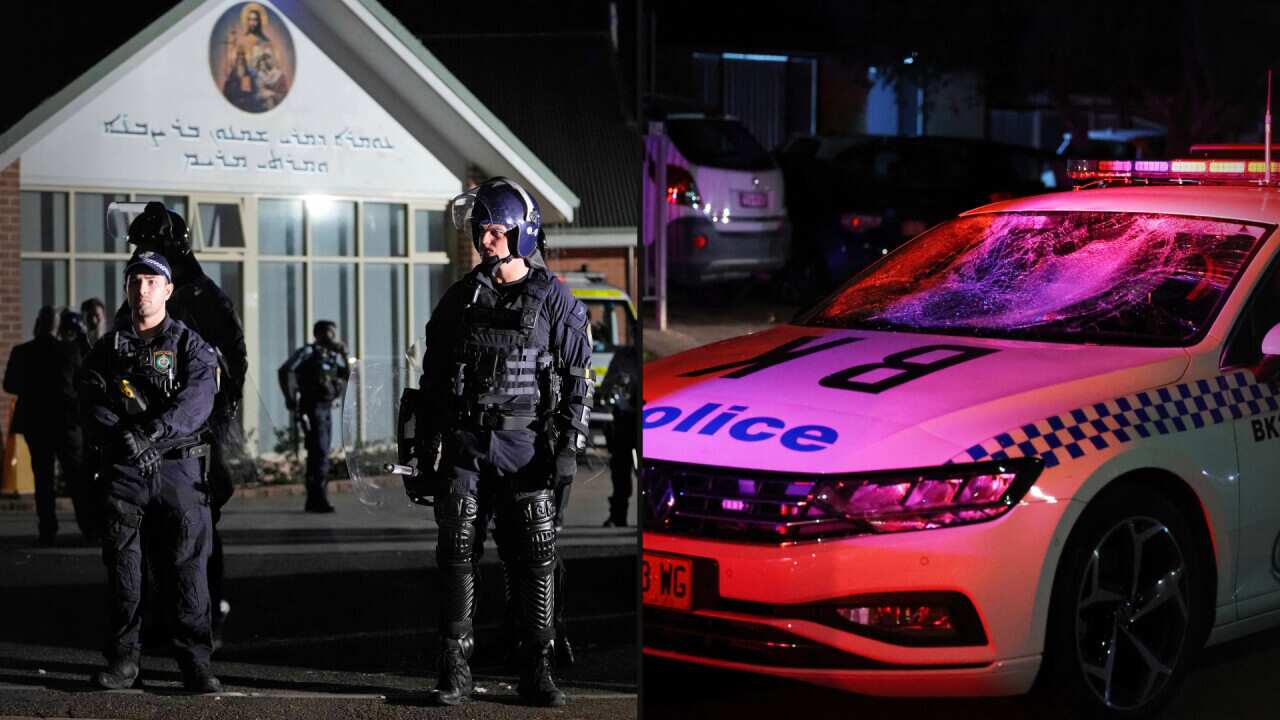A high-tech missile has been removed from an Aboriginal heritage site in remote South Australia this week following a joint investigation by SBS News and NITV.
The 1.32-metre missile is believed to have been made by a subsidiary of European weapons company Saab and was found at a registered heritage site called Lake Hart West by a group of Traditional Owners in January 2021.
SBS News and NITV revealed its location in December and spoke to members of the local community about their concerns.
“The war materiel was recovered by the Royal Australian Air Force on 18 January 2022,” the Department of Defence told SBS News in a statement. Lake Hart West is about 40 kilometres from the small town of Woomera, which is home to one of the largest weapons ranges in the world.
Lake Hart West is about 40 kilometres from the small town of Woomera, which is home to one of the largest weapons ranges in the world.

Kokatha man Andrew Starkey stands near the missile before it was retrieved from the site. Source: Supplied
The department maintains it does not test weapons at culturally significant Aboriginal sites, and neither the department nor Saab have addressed questions over why the missile was found at Lake Hart West.
Preserving significant sites
The conservation of Aboriginal heritage sites has been under intense scrutiny since mining company Rio Tinto blew up the 46,000-year-old Juukan Gorge caves in Western Australia in May 2020. An inquiry into the disaster found existing state and Commonwealth laws were failing to protect Aboriginal heritage areas.
Lake Hart West is important to the Kokatha people of the Western Desert region of South Australia, It is scattered with artefacts, historic shelters and tool-making sites. Brothers Robert and Andrew Starkey are Kokatha Badu – respected senior figures, or lore men, who have devoted many years to documenting and preserving sites around Lake Hart. Robert Starkey was among the group that discovered the missile while inspecting culturally-significant sites in the area and is pleased to see it has been removed.
Brothers Robert and Andrew Starkey are Kokatha Badu – respected senior figures, or lore men, who have devoted many years to documenting and preserving sites around Lake Hart. Robert Starkey was among the group that discovered the missile while inspecting culturally-significant sites in the area and is pleased to see it has been removed.

Weapons experts have identified the missile as an RBS-70 manufactured by Swedish company Saab. Source: Supplied
“We are very pleased because it has been a year since we first found it,” he said.
“Its removal will enable us to gain access to the area to continue our site verification and condition assessments of important sites.”
Lake Hart lies in a remote part of the South Australian desert; a glistening white salt lake that was briefly mined in the early 1900s. Surrounding it is a diverse ecosystem of creeks, valleys, sand dunes, claypans and sparse grasslands. Andrew Starkey said the missile had been found near Aboriginal artefacts and rock art.
Andrew Starkey said the missile had been found near Aboriginal artefacts and rock art.

The salt-encrusted surface of Lake Hart. Source: Getty/EyeEm
“Stone tools were prolific [in the area] because of the nearby knapping floors, workshops with grind and hammerstones and anvils.
“We found excellent examples of tools including 'piri points'; general-purpose tools for cutting leather [and] meat.”
Saab faces complaint
Human rights lawyer John Podgorelec has been representing the Starkeys as they pursue a complaint against Saab under OECD guidelines. The complaint initially concerned the Australian outpost of Saab, but the Saab parent company based in Sweden has since been added.
Broadly, before the Lake Hart West missile was tested in Australia. “Generally speaking, a weapons manufacturer is obligated to have measures in place which should include robust human rights due diligence policies and processes – separate from those of the state – to identify, prevent, mitigate and account for how they address their human rights impacts,” Mr Podgorelec said.
“Generally speaking, a weapons manufacturer is obligated to have measures in place which should include robust human rights due diligence policies and processes – separate from those of the state – to identify, prevent, mitigate and account for how they address their human rights impacts,” Mr Podgorelec said.

The Australian Army tests an RBS-70 missile over Lake Hart during exercise Remagen Bridge in 2019. Source: ADF/Twitter
An entry on the OECD complaint database reads: "Specifically, the issues relate to the discovery of an unexploded ordinance in South Australia by the Starkey Traditional Owners, resulting in risk to personal safety and artefacts of cultural significance."
Mr Podgorelec said he anticipated the initial assessment of the complaint would be completed by the end of January. SBS News and NITV sent a photo of the missile to a team of Europe-based investigators with expertise in weapons tracing. They said the missile appeared to be an RBS-70, made by a subsidiary of Saab. The RBS-70 is described as a short-range, highly accurate, air-defence system.
SBS News and NITV sent a photo of the missile to a team of Europe-based investigators with expertise in weapons tracing. They said the missile appeared to be an RBS-70, made by a subsidiary of Saab. The RBS-70 is described as a short-range, highly accurate, air-defence system.

Andrew Starkey says tools such as these piri points can be found near where the missile landed. Source: Supplied
Saab has not confirmed it is the manufacturer of the missile and declined to answer questions sent by SBS News and NITV.










